Synergism and Antagonism of Two Distinct, but Confused, Nrf1 Factors in Integral Regulation of the Nuclear-to-Mitochondrial Respiratory and Antioxidant Transcription Networks
- PMID: 33376579
- PMCID: PMC7744186
- DOI: 10.1155/2020/5097109
Synergism and Antagonism of Two Distinct, but Confused, Nrf1 Factors in Integral Regulation of the Nuclear-to-Mitochondrial Respiratory and Antioxidant Transcription Networks
Abstract
There is hitherto no literature available for explaining two distinct, but confused, Nrf1 transcription factors, because they shared the same abbreviations from nuclear factor erythroid 2-related factor 1 (also called Nfe2l1) and nuclear respiratory factor (originally designated α-Pal). Thus, we have here identified that Nfe2l1Nrf1 and α-PalNRF1 exert synergistic and antagonistic roles in integrative regulation of the nuclear-to-mitochondrial respiratory and antioxidant transcription profiles. In mouse embryonic fibroblasts (MEFs), knockout of Nfe2l1-/- leads to substantial decreases in expression levels of α-PalNRF1 and Nfe2l2, together with TFAM (mitochondrial transcription factor A) and other target genes. Similar inhibitory results were determined in Nfe2l2-/- MEFs but with an exception that both GSTa1 and Aldh1a1 were distinguishably upregulated in Nfe2l1-/- MEFs. Such synergistic contributions of Nfe2l1 and Nfe2l2 to the positive regulation of α-PalNRF1 and TFAM were validated in Keap1-/- MEFs. However, human α-PalNRF1 expression was unaltered by hNfe2l1α-/- , hNfe2l2-/-ΔTA , or even hNfe2l1α-/-+siNrf2, albeit TFAM was activated by Nfe2l1 but inhibited by Nfe2l2; such an antagonism occurred in HepG2 cells. Conversely, almost all of mouse Nfe2l1, Nfe2l2, and cotarget genes were downexpressed in α-PalNRF1+/- MEFs. On the contrary, upregulation of human Nfe2l1, Nfe2l2, and relevant reporter genes took place after silencing of α-PalNRF1, but their downregulation occurred upon ectopic expression of α-PalNRF1. Furtherly, Pitx2 (pituitary homeobox 2) was also identified as a direct upstream regulator of Nfe2l1 and TFAM, besides α-PalNRF1. Overall, these across-talks amongst Nfe2l1, Nfe2l2, and α-PalNRF1, along with Pitx2, are integrated from the endoplasmic reticulum towards the nuclear-to-mitochondrial communication for targeting TFAM, in order to finely tune the robust balance of distinct cellular oxidative respiratory and antioxidant gene transcription networks, albeit they differ between the mouse and the human. In addition, it is of crucial importance to note that, in view of such mutual interregulation of these transcription factors, much cautions should be severely taken for us to interpret those relevant experimental results obtained from knockout of Nfe2l1, Nfe2l2, α-Pal or Pitx2, or their gain-of-functional mutants.
Copyright © 2020 Shuwei Zhang et al.
Conflict of interest statement
The authors declare no conflict of interest.
Figures
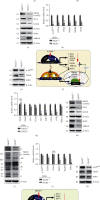
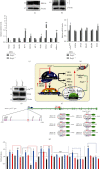
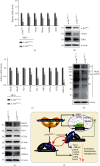
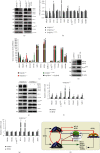
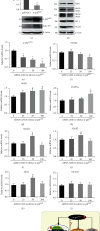
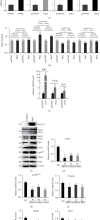
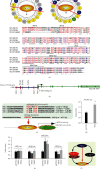
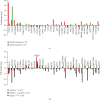
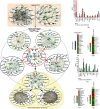
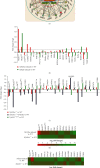

Similar articles
-
Negative regulation of the Nrf1 transcription factor by its N-terminal domain is independent of Keap1: Nrf1, but not Nrf2, is targeted to the endoplasmic reticulum.Biochem J. 2006 Nov 1;399(3):373-85. doi: 10.1042/BJ20060725. Biochem J. 2006. PMID: 16872277 Free PMC article.
-
Unification of Opposites between Two Antioxidant Transcription Factors Nrf1 and Nrf2 in Mediating Distinct Cellular Responses to the Endoplasmic Reticulum Stressor Tunicamycin.Antioxidants (Basel). 2019 Dec 19;9(1):4. doi: 10.3390/antiox9010004. Antioxidants (Basel). 2019. PMID: 31861550 Free PMC article.
-
Human AP endonuclease/redox factor APE1/ref-1 modulates mitochondrial function after oxidative stress by regulating the transcriptional activity of NRF1.Free Radic Biol Med. 2012 Jul 15;53(2):237-48. doi: 10.1016/j.freeradbiomed.2012.04.002. Epub 2012 May 11. Free Radic Biol Med. 2012. PMID: 22580151
-
NFE2L1/Nrf1 serves as a potential therapeutical target for neurodegenerative diseases.Redox Biol. 2024 Feb;69:103003. doi: 10.1016/j.redox.2023.103003. Epub 2023 Dec 18. Redox Biol. 2024. PMID: 38150994 Free PMC article. Review.
-
Role of Nrf1 in antioxidant response element-mediated gene expression and beyond.Toxicol Appl Pharmacol. 2010 Apr 1;244(1):16-20. doi: 10.1016/j.taap.2009.07.034. Epub 2009 Aug 6. Toxicol Appl Pharmacol. 2010. PMID: 19665035 Free PMC article. Review.
Cited by
-
Proteasome gene expression is controlled by coordinated functions of multiple transcription factors.J Cell Biol. 2024 Aug 5;223(8):e202402046. doi: 10.1083/jcb.202402046. Epub 2024 May 20. J Cell Biol. 2024. PMID: 38767572 Free PMC article.
-
TFF3 drives Hippo dependent EGFR-TKI resistance in lung adenocarcinoma.Oncogene. 2025 Mar;44(11):753-768. doi: 10.1038/s41388-024-03244-5. Epub 2024 Dec 10. Oncogene. 2025. PMID: 39658649
-
Nrf1 acts as a highly-conserved determinon for maintaining robust redox homeostasis in the eco-evo-devo process of life histories.Cell Stress. 2025 Jul 7;9:65-142. doi: 10.15698/cst2025.07.306. eCollection 2025. Cell Stress. 2025. PMID: 40703332 Free PMC article. Review.
-
Qiangji Jianli Decoction Alleviates Hydrogen Peroxide-Induced Mitochondrial Dysfunction via Regulating Mitochondrial Dynamics and Biogenesis in L6 Myoblasts.Oxid Med Cell Longev. 2021 Apr 13;2021:6660616. doi: 10.1155/2021/6660616. eCollection 2021. Oxid Med Cell Longev. 2021. PMID: 33936383 Free PMC article.
-
NFE2L1 as a central regulator of proteostasis in neurodegenerative diseases: interplay with autophagy, ferroptosis, and the proteasome.Front Mol Neurosci. 2025 May 1;18:1551571. doi: 10.3389/fnmol.2025.1551571. eCollection 2025. Front Mol Neurosci. 2025. PMID: 40375958 Free PMC article. Review.
References
MeSH terms
Substances
LinkOut - more resources
Full Text Sources
Medical
Research Materials
Miscellaneous

